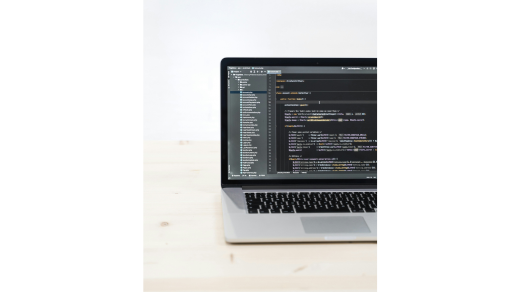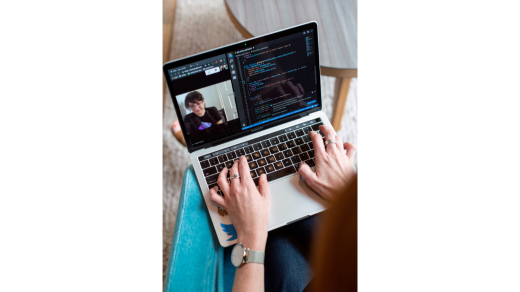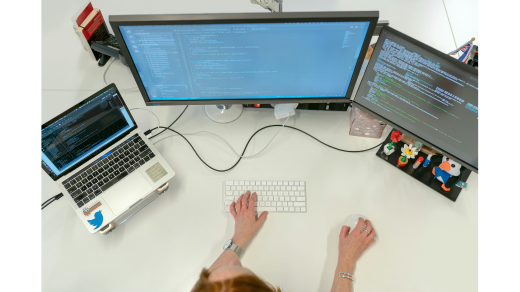
30 Key Q&A About The Impact of AI on Creative Industries
1. What is AI, and how does it impact the creative industries?
Answer: AI refers to machines or software designed to simulate human intelligence and perform tasks such as learning, problem-solving, and creativity. In creative industries, AI is used to enhance workflows, generate art, compose music, assist in writing, and optimize design processes.
2. How does AI apply to graphic design?
AI tools aid graphic design by helping to automate repeated tasks, layout suggestions and color schemes, making logos, even generating new design concepts based on patterns and user preference. Adobe Sensei uses AI to make designs easier to achieve.
3. Can AI ever replace human creativity?
Answer: AI can generate content and provide creative suggestions, but it is unlikely to replace human creativity fully. AI can assist and enhance the creative process but still requires human intuition, emotion, and judgment to create truly innovative and unique works.
4. How does AI impact the music industry?
Answer: AI is applied in composing music, creating beats, and generating a personalized playlist. Tools such as Amper Music and Jukedeck provide the ability for creators to compose music without possessing traditional music composition skills, whereas AI also enhances music recommendation algorithms for streaming sites.
5. How does AI impact film and video production?
Answer: AI helps film-making with automatic video editing, generation of visual effects, scene detection, and even assisting in scriptwriting. The analysis of audience preference can also be done by AI-based tools and predict box office success that could be a part of content creation.
6. Can AI aid in writing and journalism?
Answer: Yes, AI tools, like OpenAI’s GPT, automated journalism platforms can generate articles, summaries, or even social media posts. It is also a useful aid for curating content, doing data analysis, and even making the content relevant to other audience segments.
7. What role does AI play in the gaming industry?
Answer: AI enriches gaming by generating more complex and realistic worlds, NPC behavior, and dynamic storylines. AI is also working in support of procedural generation, whereby the content on the levels or environments involved is generated automatically, provided that there are enough interactions done by the players.
8. In a nutshell does AI pose any threat towards artists?
Answer: AI generally comes across as something that does not replace humans, but rather be an assistant which completes certain pieces of work done by artists, allowing them to make new creativity that is previously not possible 9. Describe the use of AI in advertisement and marketing
Answer: AI analyzes consumer behavior, personalizes advertisements, and automates content creation. It also helps marketers predict trends, optimize ad targeting, and improve customer experiences through chatbots and virtual assistants.
10. What role does AI play in content creation for social media?
Answer: AI helps in automating the generation of social media content, finding trending topics, and suggesting content strategies based on user engagement. It can also optimize content scheduling and manage responses through AI-powered chatbots.
11. How does AI impact the fashion industry?
Answer: AI helps predict fashion trends, optimize inventory management, and personalize recommendations. It is also used in designing clothing patterns, virtual fitting rooms, and even generating new fashion concepts using machine learning algorithms.
12. Can AI create realistic art or paintings?
Answer: AI can create images that are reproductions of well-known painting styles or completely original creations using generative algorithms. The demos of DeepArt and DALL·E have demonstrated the enormous potential of AI to produce highly dramatic and intricate art pieces, all based on either user input or learned styles.
13. Ways in which AI improves creativity in advertising
Answer: AI tools analyze consumer data to create targeted, personalized ad campaigns. AI also assists in content creation by generating copy, testing different ad formats, and providing insights on what resonates most with specific audiences.
14. How is AI helping with video game narrative development?
Answer: AI is used to generate dynamic storylines and characters that evolve based on player decisions. It enables game developers to create more interactive and personalized experiences, where the narrative can change depending on how players engage with the game.
15. Can AI predict art market trends?
Answer: AI analyzes historical art sales data, artist popularity, and current market conditions to predict trends in the art world. It helps art collectors, investors, and galleries make informed decisions about which pieces are likely to appreciate in value.
16. How is AI changing the photography industry?
Answer: AI improves photography by automatically changing lighting, focus, and color balance, improving the quality of images. Other tools that rely on AI may also be helpful in editing and retouching photos, allowing photographers to get the best pictures in a more efficient and shorter period.
17. What is generative design, and what role does AI play?
Answer: Generative design employs AI algorithms to explore all the possible design options based on set parameters, for example, material constraints, cost, or strength. AI optimizes performance and aesthetics to enable designers to come up with innovative products such as furniture, architecture, and industrial designs.
18. How is AI changing the process of animation?
Answer: AI accelerates the process of animating by automating tasks, such as in-betweening (creation of frames between key images), lip-syncing, and rendering. More detailed movements of characters and faces are also implemented through AI deep learning models.
19. Can AI be applied to digital storytelling?
Answer: Indeed, AI-based tools can actually help in coming up with storylines, developing scripts, even creating characters. AI is utilized in interactive digital storytelling, creating a narrative adapted to the responses or choices that the user presents, thus furthering the experience’s immersion and customization.
20. How does AI aid in curating content?
Answer: AI algorithms analyze user preferences and behavior to curate relevant content in real-time. It is observed in applications such as Netflix recommendations, YouTube playlists, and music applications like Spotify where AI suggests content tailored to the interest of every user.
21. What influence does AI have on copyright and intellectual property in the creative industries?
Answer: AI-generated content is raising new questions in terms of ownership and copyright. As AI is creating art, music, or writing, new questions arise about who owns the legal rights of the creators, the AI systems, and the companies behind the technology, which results in changing intellectual property laws.
22. Can AI create user experiences in creative industries?
Answer: Yes, AI can analyze user preferences, behaviors, and interactions to create highly personalized experiences. It is utilized in entertainment such as Netflix, Spotify, in the art area (personalized digital art) as well as marketing (targeted advertising) for enhancing the user engagement.
23. What are the ethical concerns regarding AI in creative industries?
Answer: The ethical concerns here are as follows:
Whether AI will eventually substitute human labor in the creative industries
Concerns on who owns AI-created content or how to claim its authorship.
Bias in AI algorithms that might sustain stereotypes in the media and the arts.
There is a need for regulation on the protection of artists’ rights and fair dealings.
24. What is the future of AI in film production?
Answer: The future of AI in film production is more advanced tools for scriptwriting, video editing, CGI generation, and audience analytics. AI can also be used for virtual actors or deepfake technology, which opens up new ways of storytelling and production techniques.
25. How does AI help improve the user interface (UI) and user experience (UX) design?
Answer: AI enhances UI/UX by analyzing user behavior to predict needs, personalize experiences, and optimize layouts. It can automate A/B testing, generate user-friendly interfaces, and provide insights for continuous improvement of digital products.
26. Can AI help restore old artworks?
Answer: Yes, AI can be used to analyze and restore damaged artworks, recreating missing elements by learning from existing patterns in the piece. AI tools can predict and reconstruct details that are faithful to the artist’s original style.
27. How does AI impact creative writing and storytelling?
Answer: AI can help writers generate ideas, suggest plot twists, and even create whole sections of text based on user inputs. AI-powered tools can speed up the writing process and help with editing, grammar checks, and content optimization.
28. How is AI changing the future of the music production industry?
Answer: AI is revolutionizing the production of music by automating the composition, generation of melodies, and providing chord progressions. AI tools enhance music mixing and mastering to arm producers with the most powerful means of creating and refining their work.
29. In what ways does AI affect the design of virtual environments?
Answer: AI is applied in the development of virtual landscapes and environments, both for games, VR, and simulations, where it may produce landscapes, cities, or scenarios. The latter can even adapt and alter according to interactions by users and produce dynamic, immersive experiences.
30. What are the risks associated with dependence on AI in creative industries?
Answer Over-reliance on AI might lead to loss of human creativity and originality, reduced employment opportunities in the creative sectors, and homogenization of content. There is a risk that generated content by the AI system could become indistinguishable from a human-created piece, making it difficult to determine what is true art and what is machine-made.
AI is reshaping the creative industries in profound ways, offering new tools for artists, designers, musicians, and filmmakers. However, it also raises important ethical, legal, and creative questions that will continue to evolve as technology advances.



